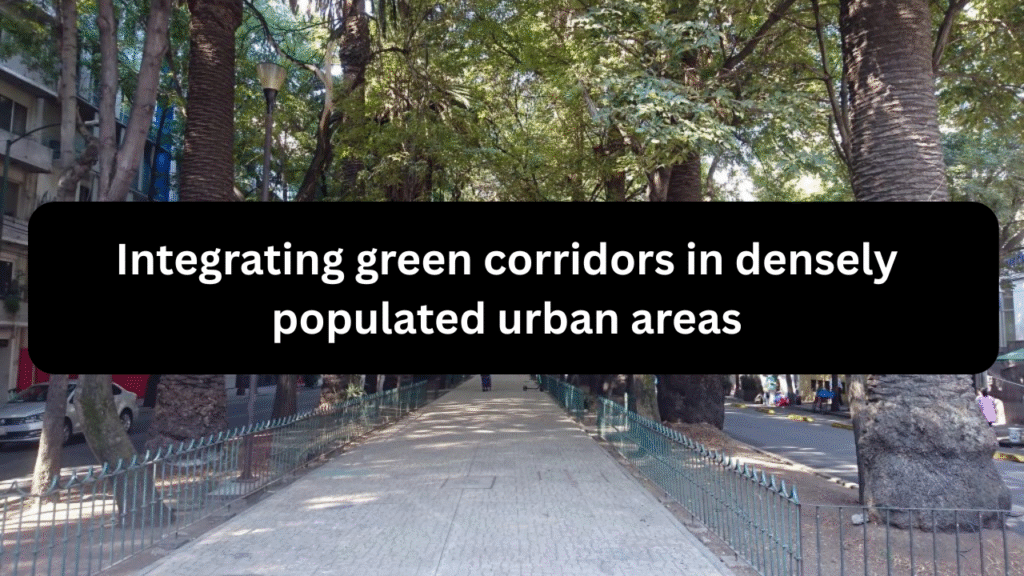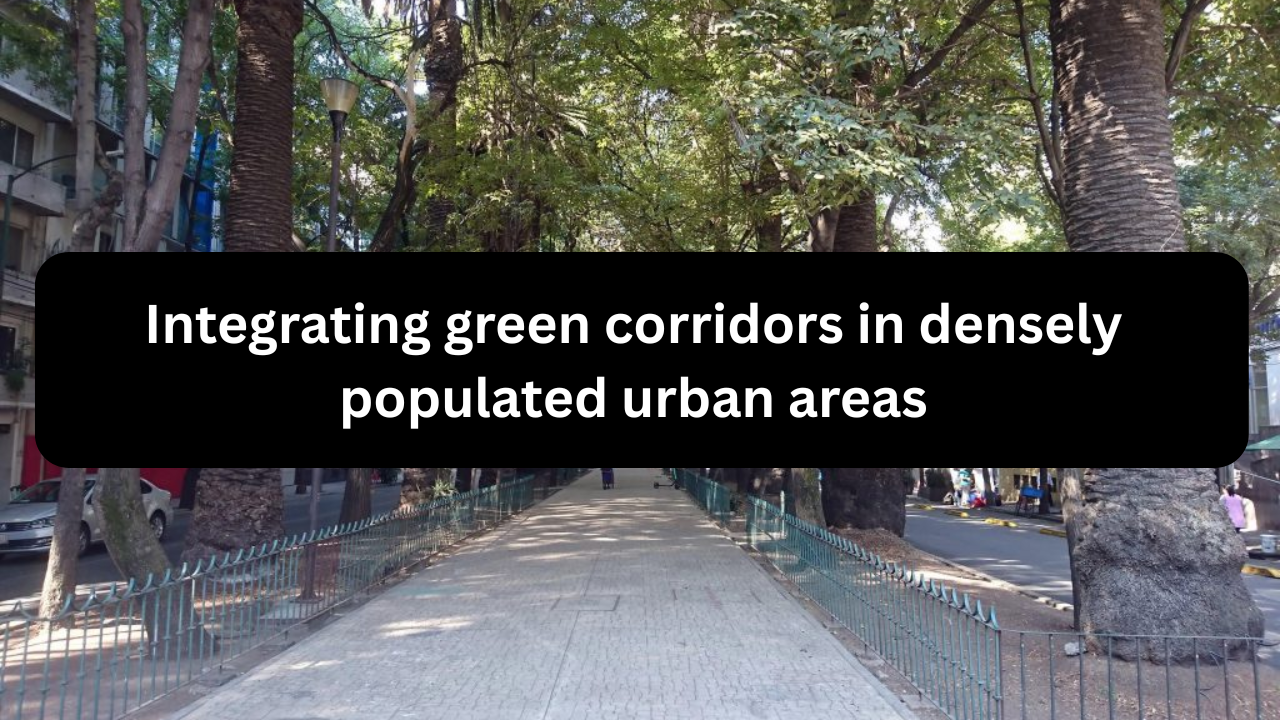
Urbanization is rapidly consuming natural landscapes, leaving concrete jungles in its wake. In response, city planners and environmental designers are turning to green corridors—continuous stretches of vegetation and open space that link parks, rivers, and natural reserves—to inject life back into dense cities. These corridors don’t just beautify cities; they serve as vital infrastructure for biodiversity, climate resilience, and human well-being.
This article explores how integrating green corridors in densely populated urban areas is redefining the way cities grow and breathe.
Overview Table: Key Benefits of Urban Green Corridors
| Aspect | Impact |
|---|---|
| Environmental | Supports biodiversity, regulates urban microclimates |
| Social | Enhances walkability, promotes public health |
| Economic | Boosts property values, attracts eco-tourism |
| Climate Resilience | Reduces urban heat island effect, manages stormwater |
| Connectivity | Links isolated green spaces and wildlife habitats |
| Aesthetic Value | Improves urban scenery and mental well-being |
1. What Are Green Corridors?
Green corridors are linear natural spaces designed to:
- Connect fragmented ecosystems
- Facilitate wildlife movement
- Offer recreational and non-motorized transit options for people
They can take many forms, including:
- Tree-lined boulevards
- Revived riverbanks
- Railway and utility easements transformed into nature trails
- Rooftop greenways connecting buildings
- Vertical corridors climbing up walls and towers
In urban settings, these corridors act as “green arteries” that restore environmental flow and urban livability.
2. Why Densely Populated Cities Need Them
Densely populated cities face:
- Overheating due to built-up surfaces
- Fragmented wildlife habitats
- Air and noise pollution
- Lack of public green space
Green corridors offer multi-functional solutions to these problems. They:
- Allow air to circulate, cooling overheated neighborhoods
- Provide shelter and routes for urban fauna like birds, bees, and squirrels
- Absorb pollutants and noise
- Offer shaded, safe, walkable environments in areas lacking parks
3. Key Components of Urban Green Corridors
| Component | Purpose | Example |
|---|---|---|
| Native Vegetation | Supports local biodiversity | Shrubs, trees, and grasses that attract pollinators |
| Permeable Pathways | Manage stormwater and allow natural absorption | Gravel or recycled rubber trails |
| Wildlife Crossings | Prevent animal-road accidents and restore migration paths | Overpasses or underpasses with foliage |
| Lighting & Signage | Ensures safety and educates users | Solar lighting, interpretive signs |
| Community Amenities | Promote use and stewardship | Benches, outdoor gyms, mural walls |
| Green Infrastructure | Integrates ecological functions | Bioswales, rain gardens, green roofs |
4. Design Principles for High-Impact Green Corridors
For green corridors to thrive in compact urban settings, certain principles must guide their design:
- Connectivity: Link parks, rivers, schools, and transit hubs to create seamless movement
- Scalability: Include micro-corridors like alley gardens and rooftop walkways
- Multi-functionality: Serve both ecological and human needs
- Equity: Prioritize underserved neighborhoods with little green access
- Resilience: Include climate-proof vegetation and water management systems
Designs should blend natural aesthetics with community relevance and functionality.
5. Challenges in Implementation
| Challenge | Solution |
|---|---|
| Land Scarcity | Use vertical greening, rooftops, or underutilized zones |
| High Development Costs | Public-private partnerships and green bonds |
| Maintenance Burden | Involve local communities and adopt low-maintenance species |
| Resistance from Developers | Offer zoning incentives and green certification benefits |
| Fragmented Urban Planning | Integrate corridor planning across departments |
Adapting these solutions requires collaborative governance and long-term commitment.
6. Successful Global Examples
| City | Green Corridor Example | Impact |
|---|---|---|
| Singapore | Park Connector Network | 300 km+ network linking parks and neighborhoods |
| New York City | High Line Park | Elevated linear park boosting tourism |
| Seoul, South Korea | Cheonggyecheon Stream Restoration | Revived biodiversity and public space |
| Medellín, Colombia | Green Corridors Project | Reduced urban temperature by up to 2°C |
| Copenhagen, Denmark | Green Bicycle Routes | Encouraged car-free commuting |
These models prove that even the most concrete-heavy cities can reintroduce nature with bold design and public engagement.
7. The Social Impact of Green Corridors
Beyond ecological benefits, green corridors have strong social implications:
- Improve physical health by encouraging walking and cycling
- Promote mental well-being through exposure to nature
- Foster social inclusion by providing gathering spaces in dense areas
- Enhance urban equity by greening underserved communities
They also play a powerful role in educating urban populations about sustainability and biodiversity through experiential interaction.
3 Best One-Line FAQs
1. Can green corridors be integrated in cities with limited space?
Yes—creative solutions like rooftop trails, vertical gardens, and alley greening make them feasible.
2. Who maintains green corridors once built?
Maintenance is often shared by municipalities, NGOs, and local communities through stewardship programs.
3. Are green corridors just for wildlife?
No—they benefit both people and nature by improving connectivity, climate resilience, and livability.
Conclusion
As urban populations grow, reconnecting cities with nature is no longer a luxury—it’s a necessity. Green corridors are not just scenic additions; they are strategic interventions that support health, biodiversity, and climate resilience. By creatively weaving green networks into the densest urban fabrics, cities can become more breathable, inclusive, and sustainable, proving that even amid concrete, life can flourish.

